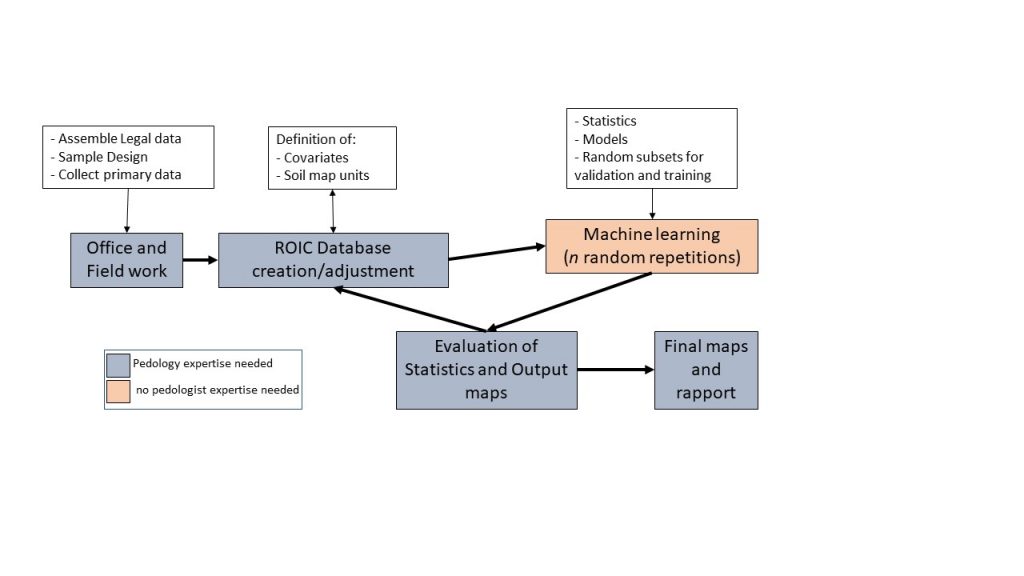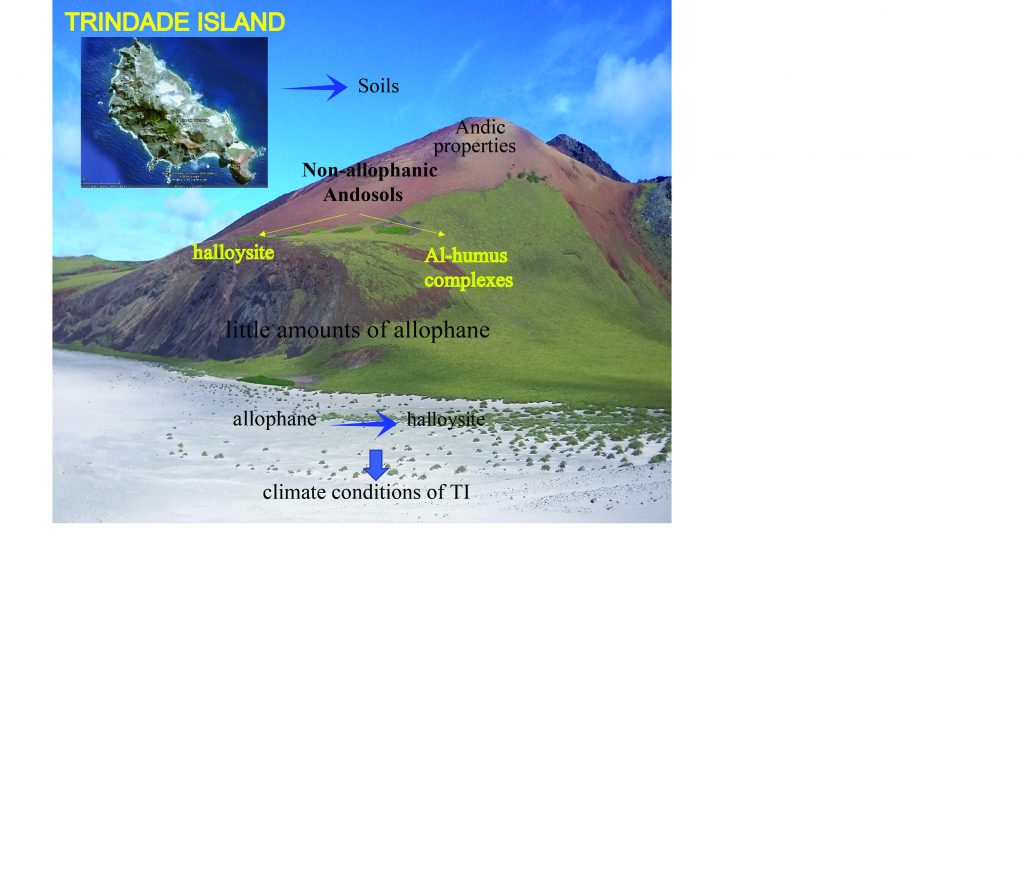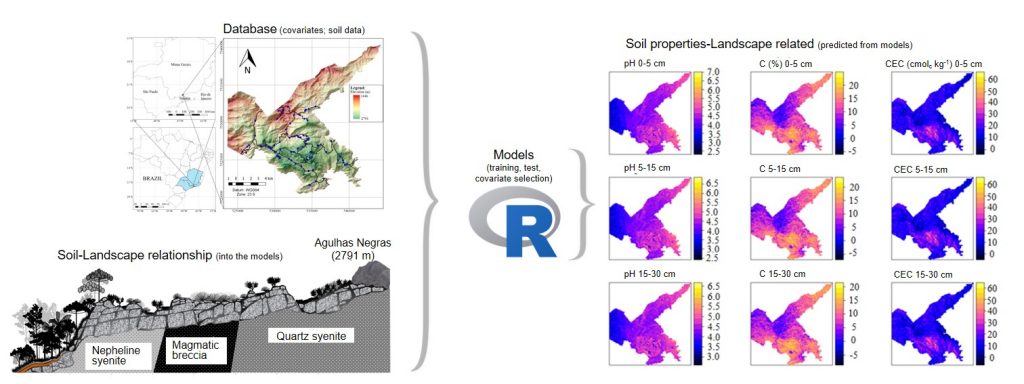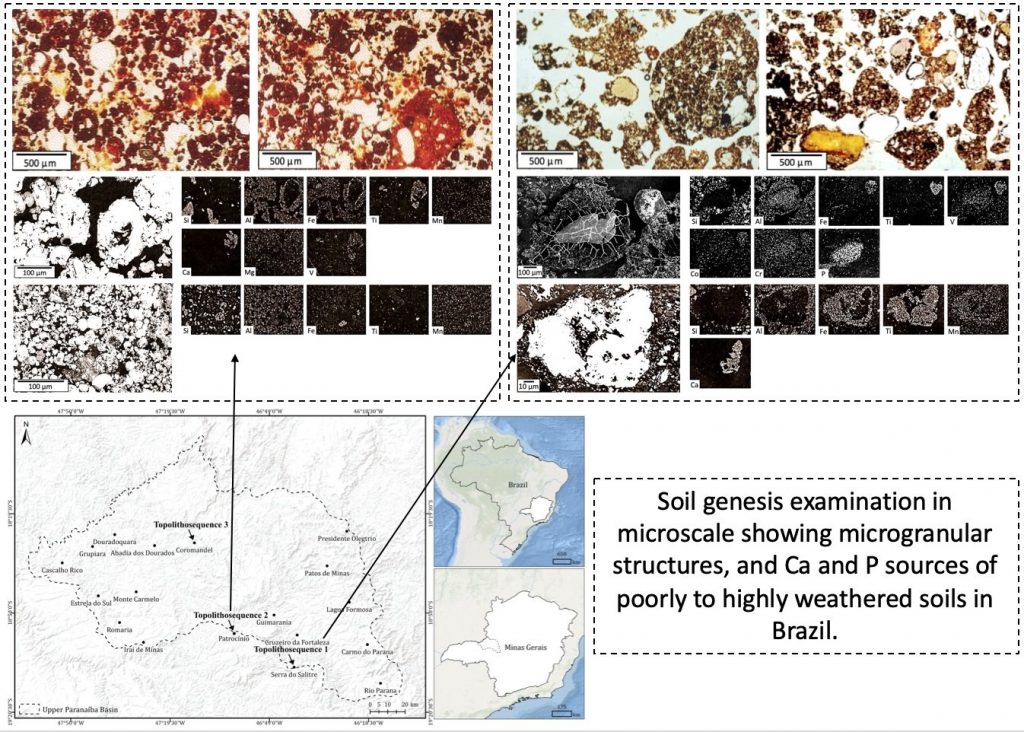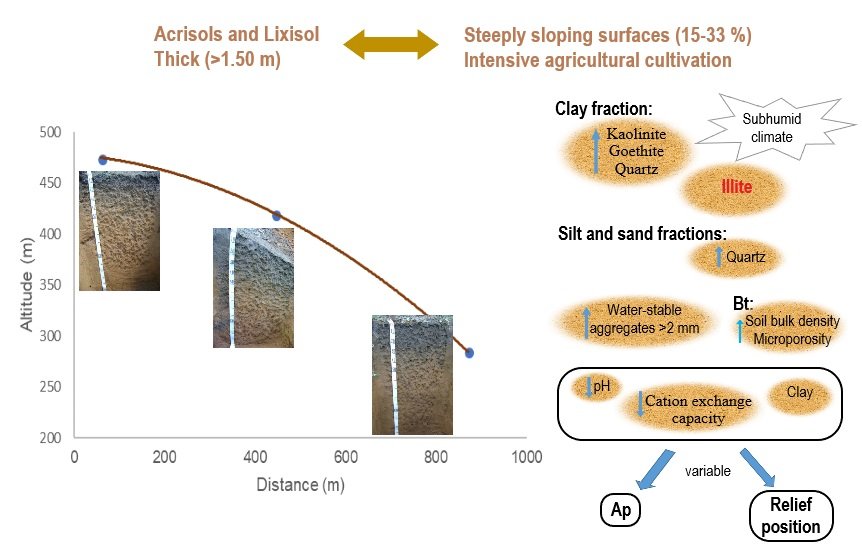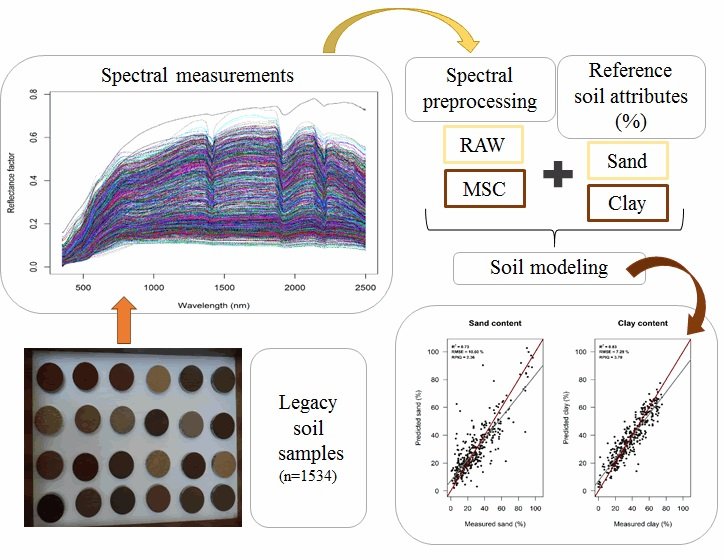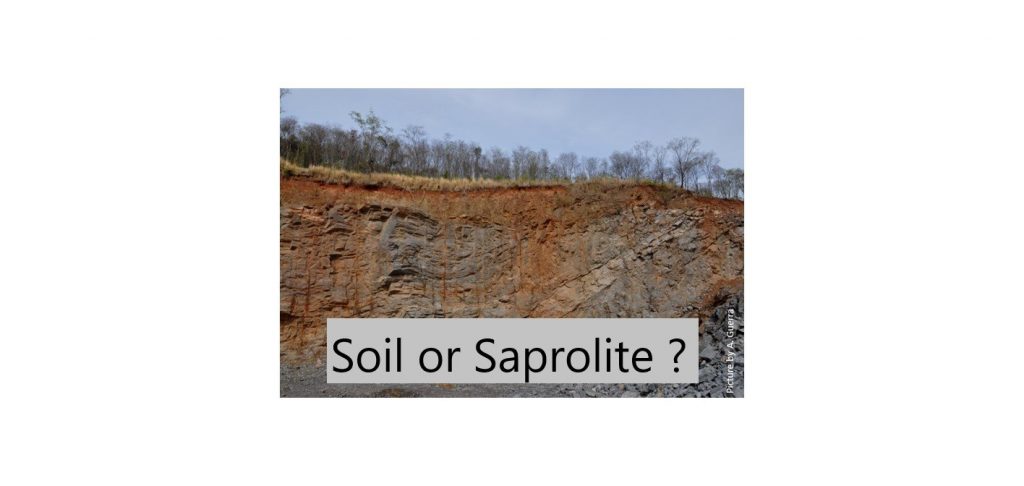Sample design effects on soil unit prediction with machine: randomness, uncertainty, and majority map
07/Aug/2020
ABSTRACT Notwithstanding the importance of soil surveys, advances in digital soil mapping have mainly focused on mapping soil attributes or properties rather than developing digital maps of soil units or soil classes. The purpose of this research was to develop digital soil unit maps based on primary soil data collection in areas without previously collected soil information. The covariate variability, the random effect across the data subset and the map outputs were the focuses of this study. We used five […]
Non-allophanic Andosols of Trindade Island, south Atlantic: a new soil order in Brazil
16/Jul/2020
ABSTRACT The pedological studies carried out so far in Trindade Island (TI) have obtained patchy evidences of allophane, without detailed mineralogical and micromorphological studies to confirm the occurrence of Andosols in TI. Therefore, in this study, the mineralogical, micromorphological, physical and chemical characterization of four soil profiles from Vulcão do Paredão (P1) and Morro Vermelho formations (P2, P3, and P4) were carried on the latest volcanic events in Brazil from Trindade Island (TI) with the aim of to evaluate the […]
Mapping soil properties in a poorly-accessible area
03/Feb/2020
ABSTRACT Soil maps are important to evaluate soil functions and support decision-making process, particularly for soil properties such as pH, carbon content (C), and cation exchange capacity (CEC), but the spatial resolution and soil depth should meet the needs of users. On another hand, the efficiency of statistical models to create soil maps, with an acceptable level of accuracy, often require a large number of samples with an appropriate distribution across the area of interest. However, accessibility for sampling can […]
Micromorphology and Genesis of Soils from Topolitosequences in the Brazilian Central Plateau
04/Sep/2019
ABSTRACT The micromorphology of deeply weathered soils (Ferralsols/ Latossolos ) from the Central Plateau of Brazil remains little studied, and its affiliation to different parent materials, poorly known. To clarify the processes of soil formation of these acric, gibbsitic, Fe-oxide rich Ferralsols, three lithotoposequences on local ultrabasic to basic intrusive rocks were studied. The influences of mixing and pedobioturbation are evident in all soils, and Ferralsols of the Central Plateau of Brazil are polygenetic, based on the coarse mineral composition, […]
Relief Position and Soil Properties under Continuous Banana Cropping in Subhumid Climate in Northeast Brazil
20/Aug/2019
ABSTRACT Sequences of thick and eroded soils in hills surfaces are cultivated with banana since the beginning of the last century in the Northeast of Pernambuco (PE), Brazil. Measurements of soil properties depending on soil slope under intensive agricultural cultivation are limited mostly as the pedogenetic approach. This study aimed to identify the dominant soil types, to evaluate morphological, physical, chemical, and mineralogical properties of soil profiles, and link them to the relief position under continuous banana cropping, in the […]
A Regional Legacy Soil Dataset for Prediction of Sand and Clay Content with Vis-Nir-Swir, in Southern Brazil
12/Aug/2019
ABSTRACT The success of soil prediction by VIS-NIR-SWIR spectroscopy has led to considerable investment in large soil spectral libraries. The aims of this study were 1) to develop a soil VIS-NIR-SWIR spectroscopy approach using legacy soil samples to improve spectral soil information in a regional scale; (2) to compare six spectral preprocessing techniques; and (3) to compare the performance of linear and non-linear multivariate models for prediction of sand and clay content. A total of 1,534 legacy soil samples, stored […]
AlradSpectra: a Quantification Tool for Soil Properties Using Spectroscopic Data in R
23/Jul/2019
ABSTRACT Soil reflectance spectroscopy has become an innovative method for soil property quantification supplying data for studies in soil fertility, soil classification, digital soil mapping, while reducing laboratory time and applying a clean technology. This paper describes the implementation of a Graphical User Interface (GUI) using R named AlradSpectra. It contains several tools to process spectroscopic data and generate models to predict soil properties. The GUI was developed to accomplish tasks such as perform a large range of spectral preprocessing […]
Field Perception of the Boundary Between Soil and Saprolite by Pedologists and its Differentiation Using Mathematical Models
19/Jun/2019
ABSTRACT Saprolite plays a central role into hydrologic and nutrient cycles. Despite that, saprolite research is scattered and uses heterogeneous, sometimes conflicting, methods and concepts. During field work, it is difficult to assign the boundary between soil and saprolite. This paper aimed to identify the subjacent logic that pedologists use to assign to a regolith volume its soil or saprolite nature. To achieve this goal, a tree algorithm was used to build a hierarchy of physical and chemical properties of […]
Field Description and Identification of Diagnostic Qualifiers for Urban Soils in Brazil
14/Jun/2019
ABSTRACT Human activities often alter soils found in urban areas. These alterations affect their environmental functions and potential for use. However, soils from urban areas in Brazil have not been surveyed and identified, which can pose a technical problem for the development of the city. Considering the importance of urban environments and their soils, this study aimed to evaluate the environmental and morphological characteristics and the physical properties of urban soils in Santa Maria, Rio Grande do Sul, Brazil. The […]
Genesis and Classification of Nitisols from Volcano-Sedimentary Lithology in Northeastern Brazil
06/Feb/2019
ABSTRACT On the southern coast of Pernambuco State (PE), Brazil, lithotypes of the Cabo Basin (volcanic and sedimentary rocks), in association with the relief, allow the determination of the dynamics of the formation of Nitossolos Háplicos (Nitisols), including those with high levels of exchangeable aluminum. The objective of this study was to evaluate the influence of lithological diversity (basalt and sedimentary siliciclastic rocks) on the morphological, physical, chemical, and mineralogical properties of Nitossolos Háplicos along a slope (P1-summit, P2-backslope, P3-footslope) […]

